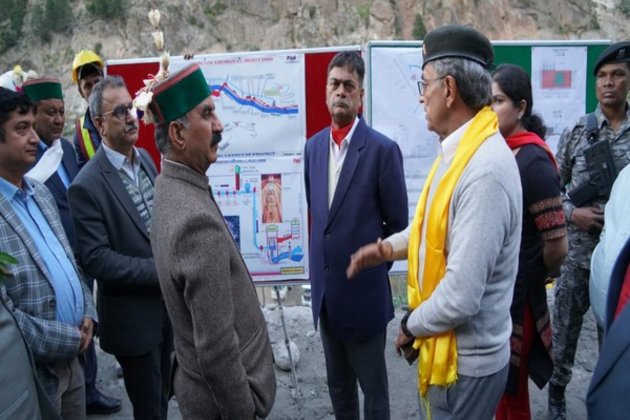Shimla: As part of the Narendra Modi government’s strategy to enhance the sense of security, create livelihood means and develop robust infrastructure in remote border areas, Union Minister for Power R K Singh reached out to Chitkul, the last inhabited village near the China border on Thursday.
The minister explained the Centre’s plans to invest in the development of facilities along the India-Tibet border.
Chief Minister Sukhwinder Singh Sukhu and minister for tribal development Jagat Singh Negi, a local MLA, travelled with the union minister and interacted with the villagers to listen to their grievances and accept some of their demands, which included setting-up of a solar power station.
Beside infrastructure like improved road connectivity for some of the villages falling within a few kilometres of the international border, the centre has a plan to invest in facilities like schools, hospitals, water supply and housing apart from providing better public transport and development of horticulture.
Apart from Chitkul, other villages taken-up under the vibrant village development programme include Pooh, Nako, Leo and Chango in the district.
There are a total 198 villages in the vicinity of the 242-km border of Himachal Pradesh with China in the two districts of Kinnaur and Lahaul-Spiti, both high altitude tribal areas. The region is recording a negative population growth of minus 5 percent as per 2011 census as villages in Kinnaur are seeing the local population migrating out.
The villages lack infrastructure such as schools, hospitals and livelihood means. The tourism activities are also limited to certain areas having road connectivity. India-China border trade which was also an attraction for some of the villagers has remained suspended –first because of deadly skirmishes at Ladakh involving the Chinese army, and later due to Covid.
The union minister announced the adoption of Chitkul village by a Central Public Sector Undertaking for its development and creating livelihood facilities.
“ Cultural –cum-tourism centres will be set-up in the villages to attract tourists. Even as entire Himachal Pradesh has rich cultural heritage but the cultural heritage of tribal areas has its own distinct identity, which attracts people from all over the world,” he said.
The union minister said that the vibrant village program is an initiative of the Central Government to strengthen the infrastructure in the northern frontier and provide all facilities at par with cities.
Singh said that a 1 MW power plant would be set up in Chitkul and would look into the possibilities of setting up micro hydropower projects on small drains of the area.
On this occasion, the CM decided to restore the bus service from Chitkul to Mandi—a service which was suspended during the Covid crisis. The Chief Minister said that the demand for construction of community hall, bus stand with parking and mini stadium in Chitkul would be taken up.
The duo later visited the 2nd Indo Tibetan Border Police (ITBP) Battalion post at Nagasti and interacted with ITBP officers and jawans.
He reviewed the situation at the borders with senior army and ITBP officers at Reckong Peo–headquarter of Kinnaur.
The Vibrant Village Plan (VVP)was approved by the union cabinet in February 2023 with an allocation of Rs 4,800 crore to bolster the social and security framework along the China border.
It aims at strengthening the security grid on the Line of Actual Control (LAC) and provide a window for the ITBP to rest, recuperate and train its personnel.
Under the plan, the cabinet has also announced plans to raise seven new ITBP battalions keeping an eye on the need for effective monitoring in the border areas and the battalion after the reports that China has upgraded its infrastructure along the LAC.
The areas under the VVP include Himachal Pradesh, Uttarakhand, Arunachal Pradesh, Sikkim and Ladakh.




















